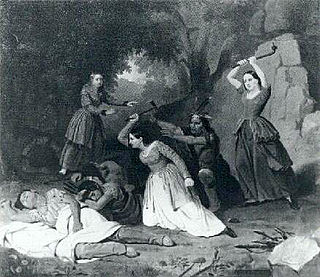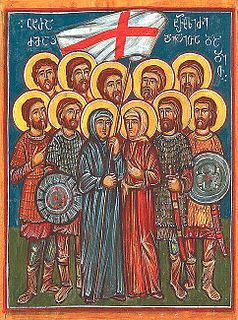 W
WAmina was a Hausa warrior queen of the city-state Zazzau, in what is now in the north-west region of Nigeria. She ruled in the mid-sixteenth century. Her real biography has been somewhat obscured by subsequent legends and folk tales.
 W
WAnna Dorota Chrzanowska née von Fresen, was a Polish heroine of the Polish–Ottoman War (1672–76), known for her acts during the Battle of Trembowla in 1675.
 W
WQueen Anu or Lady Anu was a queen consort who led warriors into battle at the founding of the Dzungar Khanate in the late 17th century.
 W
WMai Bhago also known as Mata Bhag Kaur, was a Sikh woman who led Sikh soldiers against the Mughals in 1705. She was an exceptionally skilled warrior on the battlefield and is revered as a saint in Sikhism. She was known for rallying the 40 Sikhs who abandoned Guru Gobind Singh at the siege of Anandpur Sahib and bringing them back to fight.
 W
WCockacoeskie was a 17th-century leader of the Pamunkey tribe in what is now the American state of Virginia. During her thirty-year reign, she worked within the English system, trying to recapture the former power of past paramount chiefs and maintain peaceful unity among the several tribes under her leadership. She was the first of the tribal leaders to sign the Virginia-Indian Treaty of Middle Plantation.
 W
WSusanna Cole was the lone survivor of an American Indian attack in which many of her siblings were killed, as well as her famed mother Anne Hutchinson. She was taken captive following the attack and held for several years before her release.
 W
WThe Mino, or Minon, which means "our mothers", called Dahomey Amazons by European writers, were a Fon all-female military regiment of the Kingdom of Dahomey in the present-day Republic of Benin which lasted until 1904. They were so named by Western observers and historians due to their similarity to the mythical Amazons of ancient Anatolia and the Black Sea.
 W
WChristian Davies, born Christian Cavanagh also known as Kit Cavanagh or Mother Ross was an Irishwoman who joined the British Army in 1693 disguised as a man. She fought with the infantry in Flanders during the Nine Years War until 1697, then with the 4th Dragoons, later the 2nd Royal North British Dragoons and finally with the Scots Greys in the War of the Spanish Succession from 1701 to 1706. The author Daniel Defoe met her in old age when she was a Chelsea Pensioner and turned her story into a book entitled The Life and Adventures of Mrs. Christian Davies.
 W
WHannah Duston was a colonial Massachusetts Puritan mother of nine who was taken captive by Abenaki people from Québec during King William's War, with her newborn daughter, during the Raid on Haverhill in 1697, in which 27 colonists were killed. While detained on an island in the Merrimack River in present-day Boscawen, New Hampshire, she killed and scalped ten of the Native American family members holding them hostage, with the assistance of two other captives. She claimed the Abenaki had killed her baby during the journey to the island.
 W
WAntonio de Erauso, born Catalina de Erauso, who went by Alonso Díaz and some other masculine names and is also known in Spanish as La Monja Alférez, was a one-time nun who subsequently travelled around the Basque Country, Spain and Spanish America, mostly under male identities, in the first half of the 17th century. Erauso's story has remained alive through historical studies, biographical stories, novels, movies and comics.
 W
WAnna Isabella Gonzaga, was a Duchess consort of Mantua and Montferrat and heir of the Duchy of Guastalla, including Luzzara and Reggiolo; married in 1671 to Ferdinando Carlo Gonzaga, Duke of Mantua and Montferrat. She was the regent of Mantua during the War of the Spanish Succession.
 W
WAnne Hutchinson was a Puritan spiritual advisor, religious reformer, and an important participant in the Antinomian Controversy which shook the infant Massachusetts Bay Colony from 1636 to 1638. Her strong religious convictions were at odds with the established Puritan clergy in the Boston area and her popularity and charisma helped create a theological schism that threatened to destroy the Puritans' religious community in New England. She was eventually tried and convicted, then banished from the colony with many of her supporters.
 W
WFrançoise-Marie Jacquelin was an Acadian heroine and wife of Charles de Saint-Étienne de la Tour.
 W
WKatō Tsune (加藤つね), Shōju-in (松寿院) or Otsune (お安) was a Japanese female warrior (Onna-bugeisha) from the Sengoku period. She came from the Katō clan and was the wife of the samurai warlord Okumura Nagatomi. She helped her family and the Maeda troops resist Sassa Narimasa at the Siege of Suemori Castle by providing food and medical aid to injured warriors and arming herself with a naginata to fight beside them during the conflict.
 W
WKomatsuhime (小松姫) was a female warrior (onna-bugeisha) during late-Sengoku period and early Edo period. Born the daughter of Honda Tadakatsu, she was adopted by Tokugawa Ieyasu, before marrying Sanada Nobuyuki. She is described as having been very beautiful, highly intelligent and skillful in fighting.
 W
WMaeda Matsu (前田まつ), also known as Omatsu no Kata (お松の方) (1547–1617), was a Japanese noble lady and aristocrat of the 16th century. She was the wife of Maeda Toshiie, who founded the Kaga Domain. Matsu had a reputation for intelligence; she was skilled at both literary and martial arts, she fought alongside her clan. Known for her fierce determination, Matsu was vitally important to the success of the Maeda clan, being at the forefront of many political and diplomatic issues. She was eternalized for saving the Maeda clan from Tokugawa Ieyasu in Battle of Sekigahara and Siege of Osaka.
 W
WBelawadi Mallamma was a warrior queen from Bailhongal, Belgaum District, Karnataka, India. Belvadi Mallamma is believed by many to be the first woman to form a women's army to fight against Shivaji. She also credited with being the first queen in the history the Indian subcontinent who built and trained a women's army in the 17th century.
 W
WNine Brothers Kherkheulidze with their mother and sister were heroes of the Battle of Marabda. All of them died defending their motherland.
 W
WNumata Jakō also known as Hosokawa Maria was a Japanese noble lady of the Sengoku period. She was the wife of Hosokawa Fujitaka and mother of Hosokawa Tadaoki. She was best known for fighting in the Siege of Tanabe and for accompanying the Hosokawa clan in the Tokugawa vanguard to clash with Shima Sakon's forces during the Sekigahara campaign.
 W
WNzingha Mbande (1583–1663) was Queen of the Ambundu Kingdoms of Ndongo (1624–1663) and Matamba (1631–1663), located in present-day northern Angola. Born into the ruling family of Ndongo, Nzinga received military and political training as a child, and she demonstrated an aptitude for defusing political crises as an ambassador to the Portuguese Empire. She later assumed power over the kingdoms after the death of her father and brother, who both served as kings. She ruled during a period of rapid growth in the African slave trade and encroachment of the Portuguese Empire into South West Africa, in attempts to control the slave trade. Nzinga fought for the Independence and stature of her kingdoms against the Portuguese in a reign that lasted 37 years.
 W
WMaría Mayor Fernández de Cámara y Pita (1565–1643), known as María Pita, was a heroine in the defense of Coruña, northern Spain, against the English Armada attack, an English attack upon the Spanish mainland in 1589. She was born in Sigrás.
 W
WPrillar-Guri or Prillarguri is a semi legendary figure who according to oral tradition was a woman from Sel, Norway who played a key role in the Battle of Kringen in August 1612.
 W
WQin Liangyu (1574–1648), courtesy name Zhensu, was a female general best known for defending the Ming dynasty from attacks by the Manchu-led Later Jin dynasty in the 17th century.
 W
WMary Rowlandson, née White, later Mary Talcott, was a colonial American woman who was captured by Native Americans in 1676 during King Philip's War and held for 11 weeks before being ransomed. In 1682, six years after her ordeal, The Sovereignty and Goodness of God: Being a Narrative of the Captivity and Restoration of Mrs. Mary Rowlandson was published. This text is considered a formative American work in the literary genre of captivity narratives. It went through four printings in 1682 and garnered readership both in the New England colonies and in England, leading some to consider it the first American "bestseller".
 W
WSasaki Rui was a Japanese swordwoman, Onna-bugeisha and kenjutsu expert of the early Edo period. She was known as the "Strangely Dressed Female Sword Master."
 W
WTachibana Ginchiyo was head of the Japanese Tachibana clan and onna-bugeisha during the Sengoku period. She was the daughter of Tachibana Dōsetsu, a powerful retainer of the Ōtomo clan. Because Dosetsu had no sons, he requested that Ginchiyo be made family head.
 W
WTarabai Bhonsale was the regent of the Maratha Empire of India from 1700 until 1708. She was the queen of Chhatrapati Rajaram Bhonsale, daughter-in-law of the empire's founder Shivaji and mother of Shivaji II. She is acclaimed for her role in keeping alive the resistance against Mughal occupation of Maratha territories after the death of her spouse, and acted as regent during the minority of her son. Her efforts for preservation of indigenous culture is widely lauded.
 W
WTembandumba was a ruler of the Jagas of what is now Angola.
 W
WWeetamoo, also referred to as Weethao, Weetamoe, Wattimore, Namumpum, and Tatapanunum, was a Pocasset Wampanoag Native American Chief. She was the sunksqua, or female sachem, of Pocasset tribe, which occupied contemporary Tiverton, Rhode Island in 1620.
 W
WYodo-dono (淀殿) or Yodogimi (淀君) was a prominently placed figure in late-Sengoku period. She was the daughter of Oichi and sister of Ohatsu and Oeyo. She was a concubine and second wife of Toyotomi Hideyoshi, who was then the most powerful man in Japan. She also became the mother of his son and successor, Hideyori. Her time period being that of large turmoil and overhaul, Yodo-dono had an interest toward both politics and administration. She actively acted in the restoration of the Toyotomi clan after the fall of the Council of Five Elders, as Hideyori's guardian. Alongside her son, Yodo-dono led the last anti-Tokugawa shogunate resistance in the Siege of Osaka.
 W
WYuki no Kata (ゆきの方) or Oyuki (おゆき), was a Japanese female warrior (Onna-bugeisha) from the Sengoku period. She was the wife of Tomita Nobutaka, an officer of Toyotomi Hideyoshi. Her birth and death are not recorded. Portrayed in current records as beautiful and highly skilled warrior, she defended the Anōtsu castle in the Battle of Sekigahara.
 W
WCountess Ilona Zrínyi was a noblewoman and heroine. She was one of the last surviving members of the Croatian-Hungarian Zrinski/Zrínyi noble family. She was the daughter of Petar Zrinski, Ban (viceroy) of Croatia, the niece of both Miklós Zrínyi and Fran Krsto Frankopan and the wife of Francis Rákóczi I and Imre Thököly, as well as the mother of Francis Rákóczi II. She is remembered in history for her Defense of Palanok Castle against the Imperial army in 1685-1688, an act for which she was regarded a heroine in Hungary.